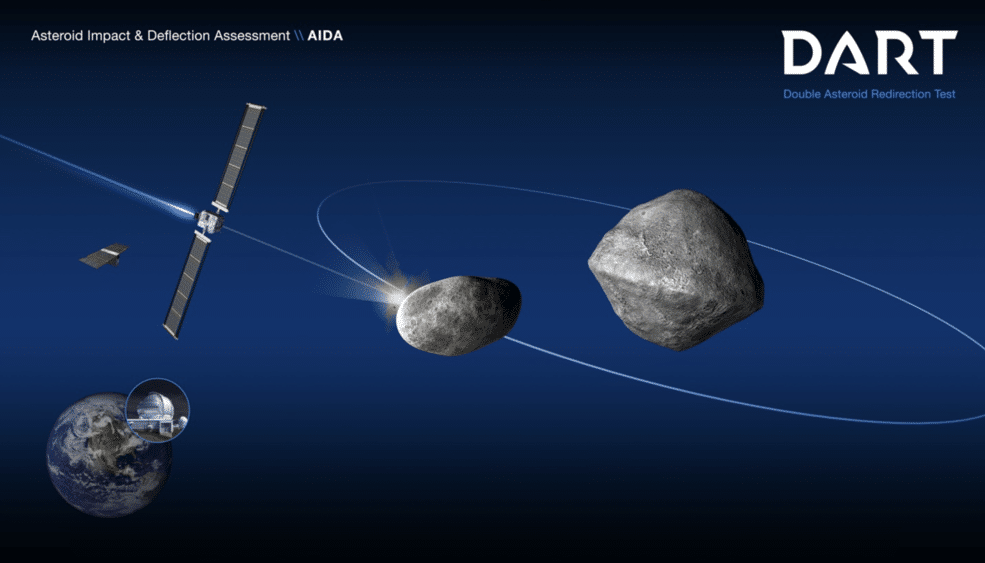If an asteroid comes hurtling toward Earth, Vandenberg Air Force Base might be the planet’s first line of defense.
NASA is currently developing a way to divert asteroids on a collision course toward the planet, preventing a cataclysmic event that could endanger life on Earth. (If you’ve forgotten what a big deal this is, dust off your VHS copy of “Armageddon” and watch Bruce Willis and Ben Affleck ardently worry about just that for two-and-a-half hours.)
So the Double Asteroid Redirection Test (DART) Mission was born.
The premise is simple: Hit an asteroid with enough force to change its orbit and (hopefully) prevent a collision.

Schematic of the DART mission shows the impact on the moonlet of asteroid (65803) Didymos. Post-impact observations from Earth-based optical telescopes and planetary radar would, in turn, measure the change in the moonlet’s orbit about the parent body.
(Johns Hopkins Applied Physics Lab/NASA)
The test, NASA’s first-ever planetary defense mission, was approved in 2017.
“DART is a critical step in demonstrating we can protect our planet from a future asteroid impact,” Andy Cheng of The Johns Hopkins Applied Physics Laboratory said in a news release at the time. (The Johns Hopkins Applied Physics Laboratory is the co-lead on the project with NASA).
“Since we don’t know that much about their internal structure or composition, we need to perform this experiment on a real asteroid,” he said. “With DART, we can show how to protect Earth from an asteroid strike with a kinetic impactor by knocking the hazardous object into a different flight path that would not threaten the planet.”
Launched from the Central Coast
To test the idea, NASA will launch a DART spacecraft using SpaceX’s Falcon 9 rocket from Vandenberg Air Force Base around July 2021.
On Tuesday, Vandenberg Air Force Base spokeswoman 2nd Lt. Kaylee Schanda confirmed that the mission was on track to launch from the Central Coast base that year, but directed requests for further comment on the mission to NASA. Requests for comment from NASA were not returned as of Thursday evening.
The target is a binary asteroid system that’s been under close observation for more than a decade: the 2,559-foot Didymos A, and a smaller “moonlet” orbiting around it that measures roughly the size of the Washington Monument.
The moonlet — the primary target — is the size of other asteroids “that could pose the most likely significant threat to Earth,” according to NASA’s Planetary Defense website.
But don’t worry, neither it nor the larger Didymos A are projected to actually hit Earth — they’ll safely fly by with a few million miles to spare, even without the test.
Once it separates from the rocket, the DART spacecraft will cruise for a little more than a year before deliberately crashing into the moonlet, hopefully knocking its orbit off by a fraction of one percent, according to the website.
“This will change the orbital period of the moonlet by several minutes — enough to be observed and measured using telescopes on Earth,” according to the website.
The impact would happen around September 2022, when the Didymos system is within 6.8 million miles of Earth (for reference, the moon is 238,900 miles away).
The test is essential to determining if such a procedure would actually work in the event that an asteroid does seem to be heading for impact with Earth.
The total cost for NASA to launch DART is approximately $69 million, according an April news release.
———
© 2019 The Tribune (San Luis Obispo, Calif.)
Distributed by Tribune Content Agency, LLC.



